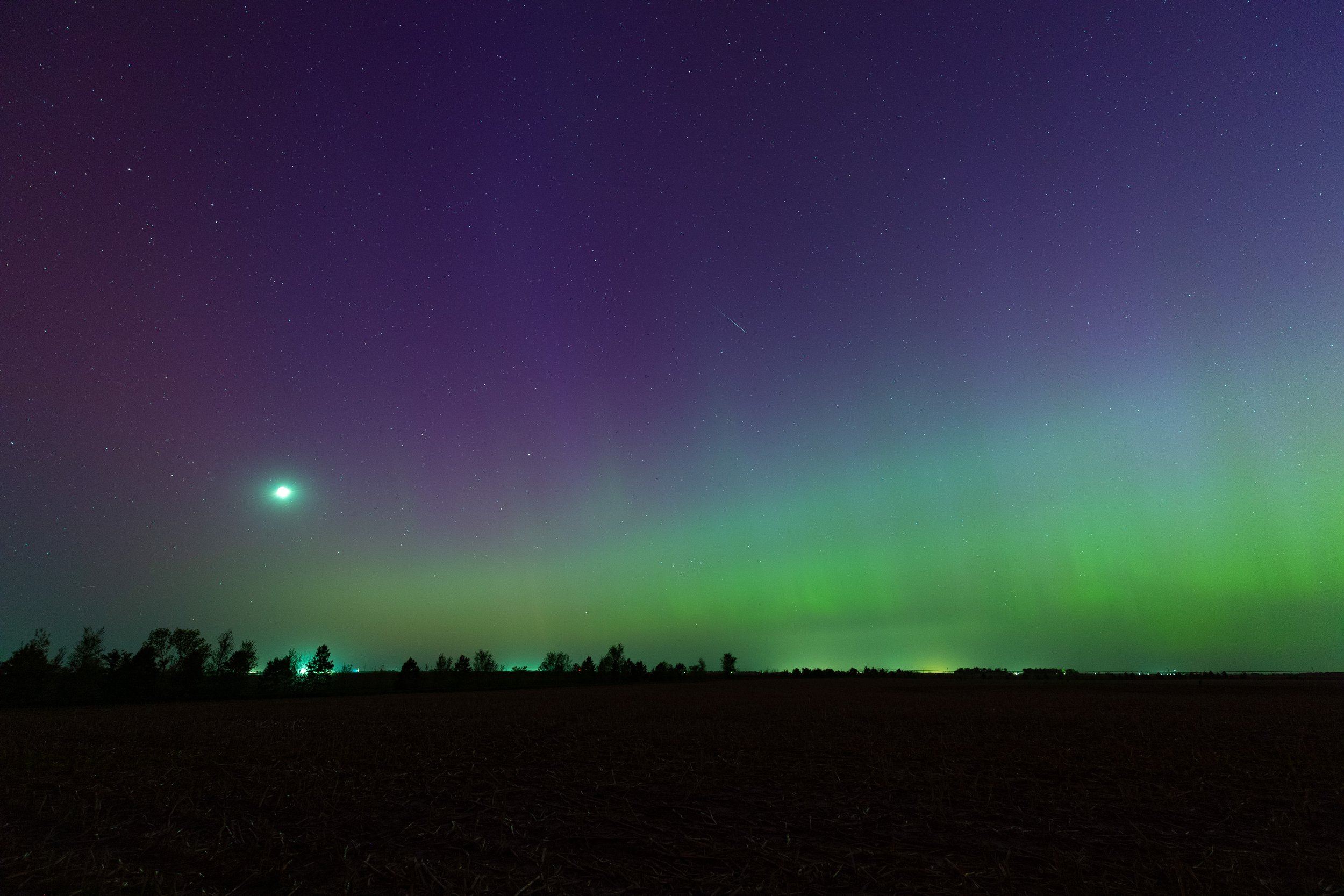Solar Storm 2024
The Sun is approaching the peak of it’s 11-year solar cycle which is an increase in sunspot activity. Sunspots are (comparatively) darker areas on the Sun signifying lower temperature caused by magnetic flux. Sunspots, coronal loops & prominences form over active regions of magnetic activity. These areas are the source of solar flares (localized intense flashes of radiation) and coronal mass ejections (expulsion of clouds of charged particles which can be as large as the mass of a small moon into inter-planetary space). The frequency of such events is strongly linked with the solar cycle, however the intensity of these events is not.
Friday the 10th, multiple CMEs arrived at Earth as some of the later ones were expelled at a higher rate of speed and caught up with preceding ones resulting in a G5 (extreme) geomagnetic storm. When the charged particles (mostly ionized hydorgen) strike the Earth’s atmosphere they are funneled towards the poles by Earth’s magnetic field. The particles interact with gasses in the atmosphere in a manner similar to how a neon light works transferring energy to the gas and exciting it to a higher state causing it to emit light. This is the source of the Aurora Borealis (Northern Lights) and it’s counterpart in the south Aurora Australis. The stronger the storm the further across the globe the storm can be seen. Friday’s event was reported as far South as Puerto Rico.
We were lucky to have clear skies because this was the largest event in the past 20 years. The Northern lights were clearly visible, though the camera can capture the scene better and with more color than is possible with the naked eye. Night sky is often tricky for the camera to automatically set the color balance correctly and apparently having neon green aurora made it even harder because the images started off very purple. I’ve tried to nudge them back to a more accurate color balance.









